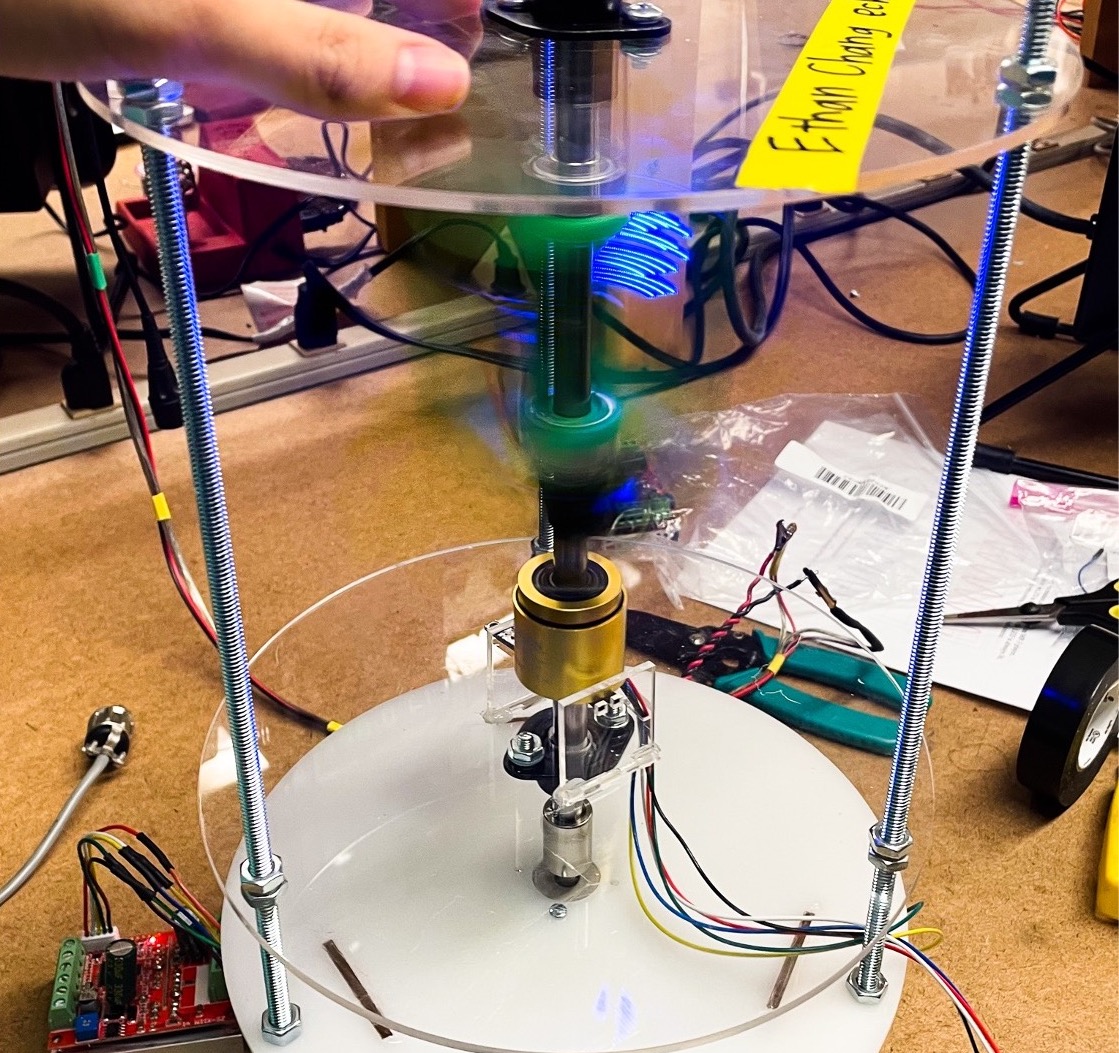Spinning Hologram
MIT Dorm Project, Jan. 2022 - May 2022

Personal Project
Control/Electronics/Design
In Spring 2022, I proposed a 3D display device to facilitate group discussions around 3D models. MIT funded the proposal, and it became my dorm project. I designed a high-rpm spinning LED matrix with optimized low-level video update code, enabling display of 3D videos suspended in midair.
Project Goal
I designed a high-rpm spinning LED matrix with a fast, low-level update code to display volumetric holograms. The LED matrix was made viewable from both sides, eliminating visual barriers. This enabled people to upload CAD files into the device and view 3D models from all angles.
Video: Hologram displaying a rolling beachball
Video: Hologram test of concept